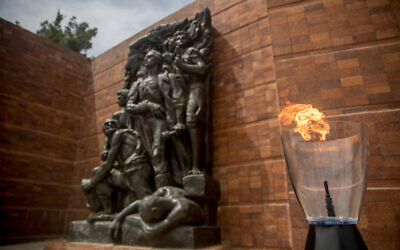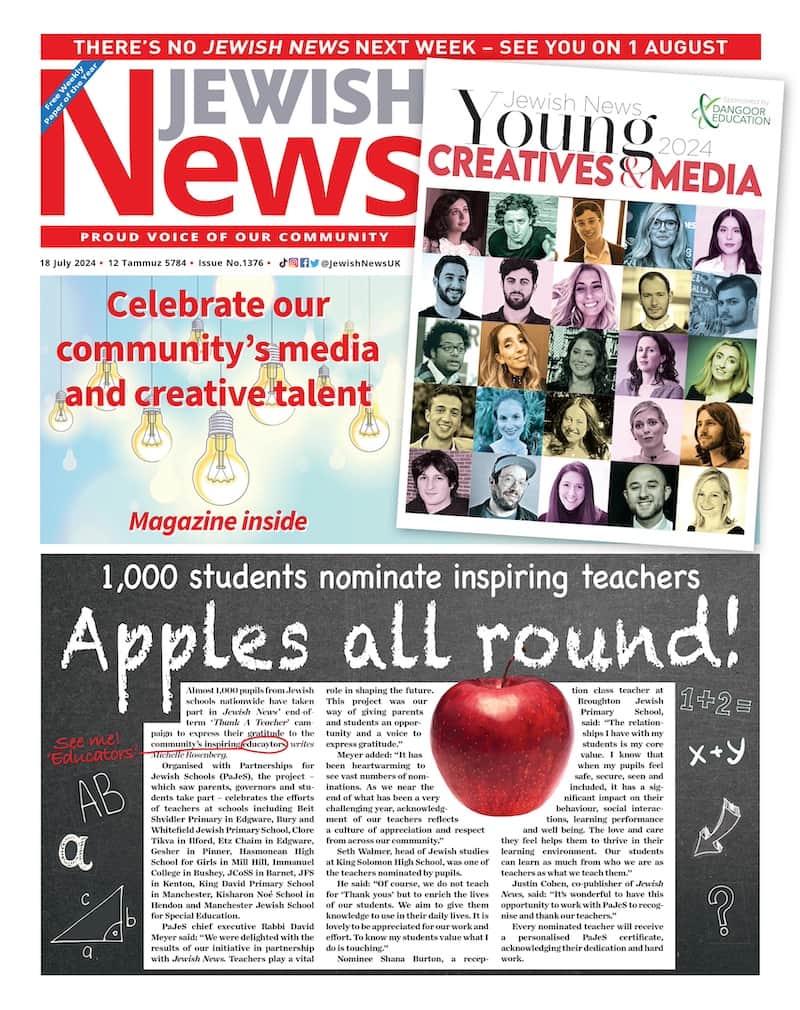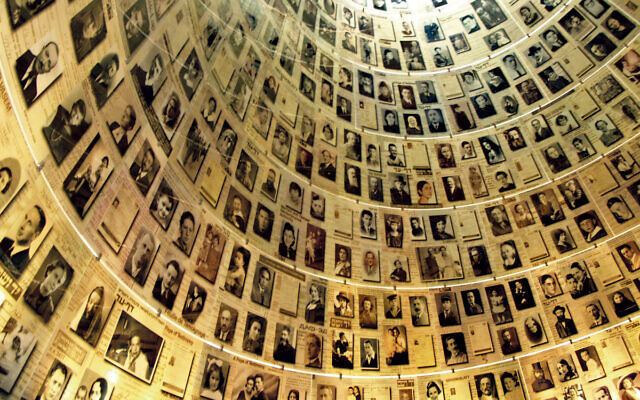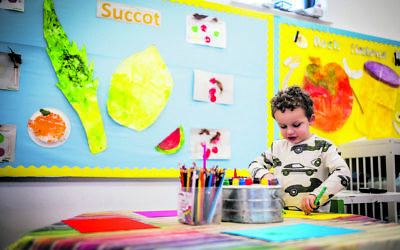Holocaust ‘Book of Names’ to be inaugurated at the UN underscores the individual identities of six million
Monumental installation containing the names of some 4,800,000 victims of the Shoah – 500,000 additional names – to be made public in New York.
When Yad Vashem was created in 1953 on the slopes of Jerusalem’s Mount of Remembrance to commemorate the Holocaust, its founders understood that one of the central functions of the institution would be to document the names of the six million Jewish victims.
It was seen as a moral imperative: to demonstrate that behind the almost inconceivable number were real individuals whose lives were cut short by the Nazis.
Now, to mark International Holocaust Remembrance Day on January 27, Yad Vashem is inaugurating its Book of Names — a monumental installation containing the names of 4,800,000 victims of the Shoah — at the United Nations headquarters in New York.
Among those participating in the Book of Names opening ceremony on Jan. 26 will be U.N. Secretary General António Guterres, Israel’s permanent representative to the United Nations, Ambassador Gilad Erdan, and Yad Vashem’s chairman, Dani Dayan, a former consul general of Israel in New York.
“The Shoah was the murder of 6 million individual Jews. Each one who died deserves to be remembered as an individual, and not only as part of a nameless collective,” Dayan said.
The Book of Names will be on display at the United Nations for a month. Afterward it will be transferred to its permanent location at Yad Vashem, the World Holocaust Remembrance Center, in Jerusalem, where it will be open to public viewing in time for Yom HaShoah, the Israeli and Jewish Holocaust remembrance day, in April.

The installation is an updated version of the Yad Vashem Book of Names that has been on permanent display at the Auschwitz-Birkenau State Museum in Poland since 2017. The new version, which contains 500,000 additional names, stands 6.5 feet high and approximately 3.3 feet wide. Its total length is 26.5 feet. The massive volume lists the names of the victims in alphabetical order and, where the information is known, includes their birth dates, hometowns and places of death.
The book has blank pages at the end symbolising the approximately one million victims whose names are not yet recorded.
The names in the Book are sourced from Yad Vashem’s Central Database of Shoah Victims’ Names.
“We have been collecting the names of the individual Holocaust victims since 1954, mainly through Pages of Testimony,” said Alexander Avram, director of Yad Vashem’s Hall of Names and the Central Database of Shoah Victims’ Names. The Pages of Testimony are one-page forms that survivors and remaining family and friends complete with the names and biographical information of the victims.
“Starting about 20 years ago, we have been able to go beyond these pages and look to thousands of other sources for names,” Avram continues. “These include lists of victims produced by federal archives or organisations in different countries, deportation lists compiled by researchers and museums, and names gathered by memorial sites and institutions. We have also sourced hundreds of thousands of names from our own collections.”
The special team that finds the names and archives them in Yad Vashem’s names database is challenged by the fact that the Nazis either tried to eliminate traces of their crimes against humanity by destroying records, or never registered Jews’ names in the first place — especially in Eastern Europe.
“Few ghettos had censuses or name registrations,” noted Avram. “Hungarian transport lists had numbers, but not names — and they were all taken to extermination sites. Similarly, there were only numerical reports of the Jews killed by the Einsatzgruppen [the mobile paramilitary killing squads organised by the Nazis]. At Auschwitz, 900,000, men, women and children were sent straight to their deaths. Only the names of those sent to slave labor there were registered on cards, and the Nazis destroyed most of these records.”
The Book of Names is one component of Yad Vashem’s new strategic plan to improve and increase Holocaust remembrance in Israel and the world at a time when the number of survivors is dwindling and Holocaust denial and antisemitism are on the rise, Dayan said.
In addition to the permanent installations at Auschwitz and Yad Vashem, there are plans for a third version of the book to be created as a traveling exhibition.
“Our mission will be much more challenging, but also much more important and vital,” Dayan said of the coming era when no survivors remain. “We have to find innovative ways to reflect on and educate about what happened. I believe that you cannot remain indifferent to such a huge display when you see it.”
Dayan said he first experienced the power of the installation when he traveled to Auschwitz to see its initial version and found the names of his father’s uncles who were murdered in Poland.
New Yorker Bronia Brandman, a child survivor of Auschwitz originally from Jaworzno, Poland, was similarly moved when she embarked on a “roots trip” with her grandson Sruli Klaristenfeld in April 2017. Brandman’s large immediate and extended families were almost entirely wiped out by the Nazis.
Klaristenfeld navigated through the massive Book of Names at Auschwitz-Birkenau and found the names of his grandmother’s parents and other relatives. “It was a physical and permanent manifestation of their memory,” Klaristenfeld said.
Brandman said the impact of the monumental installation cannot be underestimated.
“People are indifferent. Many have no concept of the Holocaust ever happening and how it could be that 6 million innocent people were murdered in cold blood, including 1.5 million children,” she said. “The importance of the Book of Names is that the victims are immortalized for the future, and the past is never forgotten.”
Dayan said he looks forward to the Book of Names’ arrival at Yad Vashem after its display at the United Nations.
“Yad Vashem is the natural permanent home for the Book of Names,” Dayan said. “The public will be able to come and browse and find relatives, people with the same name as theirs or from the same locations as their families — or even to just pay respect to the victims.”
Avram said he expects the pages of the new book to be as worn from touch by visitors seeking the names of their family members as are the pages of the Book of Names exhibited at Auschwitz.
“Many families need a tangible, tactile way to reunite with the memory of the victims,” he said. “It’s the closest we can get to providing a gravestone.”
Meanwhile, the work of recovering the unknown victims’ names will continue apace, as it has for the last seven decades.
“It’s a debt we have toward the victims,” Dayan said. “We cannot let them be consigned to the lost pages of history. That is our promise to them — and to future generations.”
This article is sponsored by and produced in collaboration with Yad Vashem, the World Holocaust Remembrance Centre.

Thank you for helping to make Jewish News the leading source of news and opinion for the UK Jewish community. Today we're asking for your invaluable help to continue putting our community first in everything we do.
For as little as £5 a month you can help sustain the vital work we do in celebrating and standing up for Jewish life in Britain.
Jewish News holds our community together and keeps us connected. Like a synagogue, it’s where people turn to feel part of something bigger. It also proudly shows the rest of Britain the vibrancy and rich culture of modern Jewish life.
You can make a quick and easy one-off or monthly contribution of £5, £10, £20 or any other sum you’re comfortable with.
100% of your donation will help us continue celebrating our community, in all its dynamic diversity...
Engaging
Being a community platform means so much more than producing a newspaper and website. One of our proudest roles is media partnering with our invaluable charities to amplify the outstanding work they do to help us all.
Celebrating
There’s no shortage of oys in the world but Jewish News takes every opportunity to celebrate the joys too, through projects like Night of Heroes, 40 Under 40 and other compelling countdowns that make the community kvell with pride.
Pioneering
In the first collaboration between media outlets from different faiths, Jewish News worked with British Muslim TV and Church Times to produce a list of young activists leading the way on interfaith understanding.
Campaigning
Royal Mail issued a stamp honouring Holocaust hero Sir Nicholas Winton after a Jewish News campaign attracted more than 100,000 backers. Jewish Newsalso produces special editions of the paper highlighting pressing issues including mental health and Holocaust remembrance.
Easy access
In an age when news is readily accessible, Jewish News provides high-quality content free online and offline, removing any financial barriers to connecting people.
Voice of our community to wider society
The Jewish News team regularly appears on TV, radio and on the pages of the national press to comment on stories about the Jewish community. Easy access to the paper on the streets of London also means Jewish News provides an invaluable window into the community for the country at large.
We hope you agree all this is worth preserving.






















